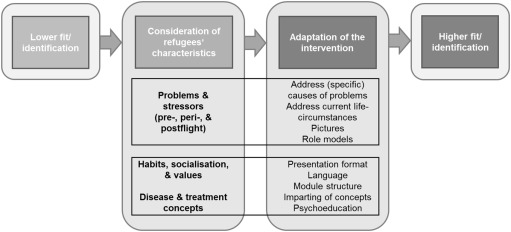The invasion of Ukraine led to a significant wave of refugees, which brought many changes to the countries of asylum. Pettrachin and Hadj Abdou (2022) note that Ukrainian refugees and society’s attitudes toward them are significantly different from people from other countries. This group has a more welcoming reception due to cultural and geographical proximity to European countries, news coverage of events in Ukraine, and other factors (Pettrachin and Hadj Abdou, 2022). To understand such features and differences, studying the topic requires a theoretical framework and considering existing models and approaches to studying refugees.
Researchers use various approaches to explain migration-related phenomena in their studies. At the same time, FitzGerald and Arar (2018) note that refugees usually do not receive attention in migration theories. Authors distinguish the existence of several approaches to understanding the concept of refugees and the application of world systems theory, integration of theory, and theories of assimilation and citizenship (FitzGerald and Arar, 2018). These theories explain the reasons for seeking asylum and consider the features of staying in a new country. Integration theories in refugee studies receive the most attention, but research highlights different aspects, like support or relationships (Phillimore, 2021). Another crucial theoretical direction is refugee adaptation; for example, Von Haumeder, Ghafoori, and Retailleau (2019) use Social cognitive theory to study the psychological adaptation of trauma survivors. The researchers also offer their models based on cultural adaptation (Figure 1).

As part of the current study, it is essential to consider the specifics of accepting refugees by other migrants. In particular, De Coninck (2020), based on social identity theory and group threat theory, argues that the categories of refugees and migrants differ significantly, creating the basis for conflict. The Unified Instrumental Model of Group Conflict highlights the possibility of conflict, emphasizing the different situations of refugees and migrants (Weisser, 2022). Typically, refugees are more dependent and have fewer opportunities to solve problems (Weisser, 2022). Finally, refugees may face discrimination and xenophobia, which is also considered by theories (Peterie and Neil, 2020). Thus, several approaches can guide and inform the current study of attitudes toward newly arrived migrants.
Reference List
De Coninck, D. (2020) ‘Migrant categorizations and European public opinion: diverging attitudes towards immigrants and refugees’, Journal of Ethnic and Migration Studies, 46(9), pp. 1667-1686.
FitzGerald, D. S. and Arar, R. (2018) ‘The sociology of refugee migration’ Annual Review of Sociology, 44, pp. 387-406.
Peterie, M. and Neil, D. (2020) ‘Xenophobia towards asylum seekers: a survey of social theories’, Journal of Sociology, 56(1), pp. 23-35.
Pettrachin, A. and Hadj Abdou, L. (2022) Explaining the remarkable shift in European responses to refugees following Russia’s invasion of Ukraine. Web.
Phillimore, J. (2021) ‘Refugee-integration-opportunity structures: shifting the focus from refugees to context’ Journal of Refugee Studies, 34(2), pp. 1946-1966.
Spanhel, K. et al. (2019) ‘Cultural adaptation of internet interventions for refugees: results from a user experience study in Germany’ Internet Interventions, 18, pp. 1-13.
Von Haumeder, A., Ghafoori, B. and Retailleau, J. (2019) ‘Psychological adaptation and posttraumatic stress disorder among Syrian refugees in Germany: a mixed-methods study investigating environmental factors’ European Journal of Psychotraumatology, 10(1), pp. 1-10.
Weisser, R. A. (2022) ‘A near‐real‐time analysis of societal responses to Ukrainian refugee migration in Europe’, International Migration, pp. 1-20.